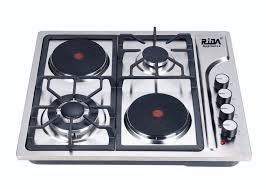From the refreshing beverages that quench our thirst to the life-saving medications we rely on, liquids play a vital role in our everyday lives. But have you ever stopped to wonder how these liquids end up neatly packaged in bottles and containers? The answer lies in the fascinating world of liquid filling.
Liquid filling is the process of accurately and efficiently transferring liquids into containers. It’s a crucial step in the production line for a vast array of industries, including:
- Food and Beverage: From juices and sodas to bottled water and condiments, liquid filling ensures consistent portion sizes and maintains product integrity.
- Pharmaceutical: Precise filling is essential for delivering accurate dosages of medications, syrups, and other liquid pharmaceuticals.
- Chemical: Filling plays a key role in packaging industrial chemicals, cleaning solutions, and personal care products.
- Cosmetics: Lotions, shampoos, and other cosmetic products rely on liquid filling for efficient and sanitary packaging.
This blog post delves into the world of liquid filling, exploring the different types of machines, the factors influencing the filling process, and the importance of this technology in modern production.
Unveiling the Liquid Filling Machine: A Workhorse of Production
At the heart of liquid filling lies a specialized machine, aptly named the liquid filling machine. These machines come in various configurations, each suited to handle specific types of liquids, container sizes, and production demands. Here’s a breakdown of the most common types:
- Volumetric Filling Machines: These machines dispense a pre-determined volume of liquid using pistons, pumps, or gravity. They offer high accuracy and are ideal for thin, free-flowing liquids.
- Gross Weight Filling Machines: These machines fill containers based on weight. They work well for thick, viscous liquids or products with foaming properties.
- Overflow Filling Machines: As the name suggests, these machines fill containers until a predetermined level is reached. They are suitable for liquids with minimal headroom requirements.
- Aseptic Filling Machines: Designed for sterile environments, these machines maintain aseptic conditions throughout the filling process, critical for pharmaceutical and food products with a short shelf life.
Each type of machine has its own advantages and limitations. The choice of machine depends on the specific product characteristics, production speed requirements, and desired level of accuracy.
Beyond the Machine: Factors Affecting the Liquid Filling Process
While the liquid filling machine plays a central role, several other factors influence the success of the filling process. Here are some key considerations:
- Liquid Properties: The viscosity, foaming potential, and temperature of the liquid all impact the filling process. Thicker liquids may require specialized pumps or filling techniques.
- Container Type: The size, shape, and material of the container can influence the filling method. For instance, flexible pouches may require different handling compared to rigid bottles.
- Filling Speed vs. Accuracy: Finding the right balance between filling speed and accuracy is crucial. High-speed production lines may prioritize speed, while applications requiring precise dosages (like pharmaceuticals) may prioritize accuracy.
- Sanitation and Hygiene: Maintaining a clean and hygienic environment is paramount, especially for food and pharmaceutical products. Aseptic filling techniques and proper cleaning procedures are essential.
Understanding these factors allows manufacturers to optimize their liquid filling process for efficiency, accuracy, and product quality.
The Ripple Effect: Benefits of Efficient Liquid Filling
Efficient liquid filling offers a multitude of benefits for manufacturers, ultimately impacting consumers as well. Here are some key advantages:
- Increased Production Efficiency: Modern liquid filling machines can automate the filling process, leading to faster production times and higher output.
- Enhanced Accuracy and Consistency: Precise filling ensures consistent product volume and dosage, which is critical for quality control.
- Reduced Waste: Accurate filling minimizes product overflow and spillage, leading to reduced waste and cost savings.
- Improved Product Quality: Hygienic filling environments and controlled processes contribute to a higher standard of product quality.
- Consumer Safety and Trust: Consistent and accurate filling ensures consumers receive the correct amount of product, promoting trust in the brand.
By optimizing their liquid filling operations, manufacturers can not only streamline production but also deliver high-quality products to consumers, contributing to overall industry growth.
Conclusion: The Future of Liquid Filling
The world of liquid filling is constantly evolving. Advancements in automation, robotics, and sensor technologies are leading to the development of smarter and more efficient filling machines. These advancements offer exciting possibilities for the future, including:
- Increased Versatility: Machines capable of handling a wider range of liquid properties and container types.
- Enhanced Automation: Increased integration with other production line processes for seamless operation.
- Real-time Monitoring and Control: Advanced sensors and data analytics for real-time process monitoring and control, allowing for quick adjustments and improved product consistency.


